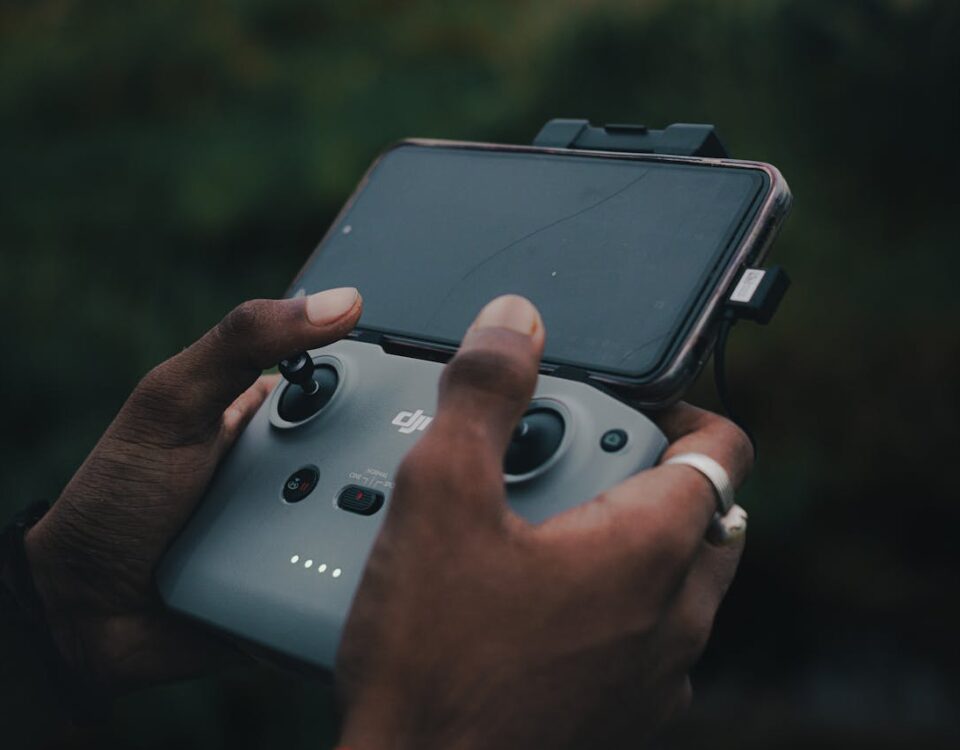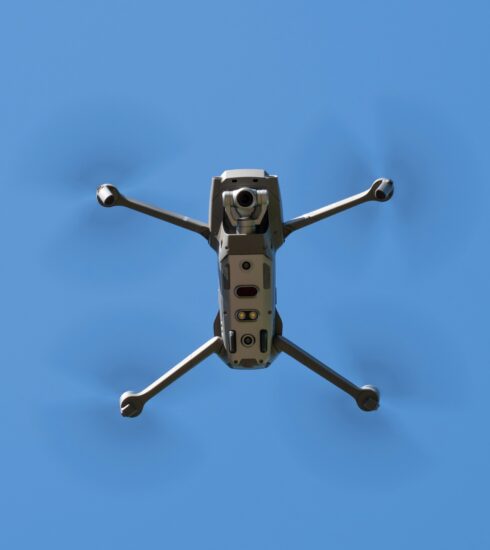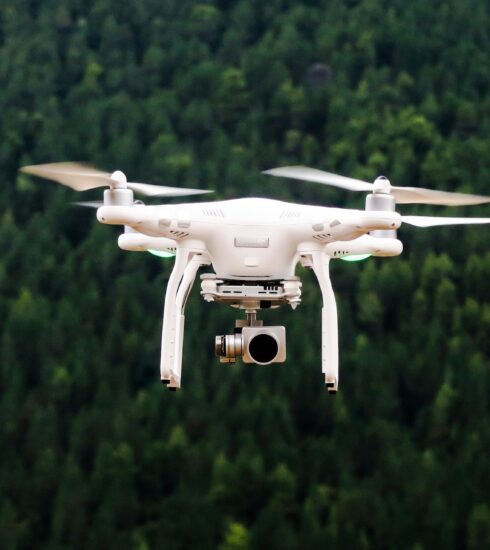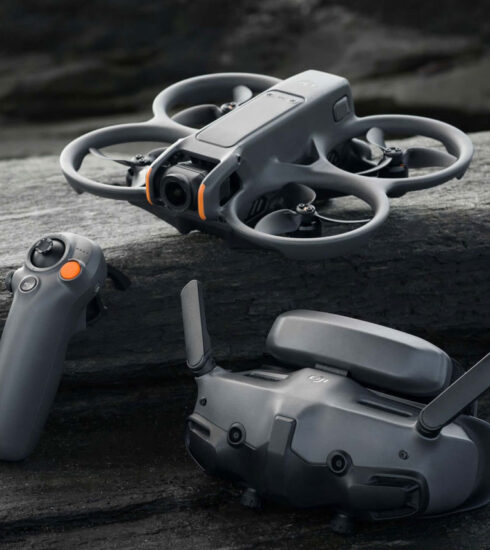Why Do So Many New Drone Pilots Crash in the First Week? Practice Basic Drone Maneuvers
Key Takeaways:
- Most drone crashes happen in the first 10 hours of flight time.
- Not learning basic drone maneuvers is one of the top reasons for failure.
- Many new pilots skip rules, fly too far, or trust automation too much.
- You’ll fly better, safer, and more confidently with a few simple habits.
- This guide breaks down real, avoidable mistakes with practical fixes.
You buy your drone. Open the box. Charge it up. You’re out the door.
And boom—fifteen minutes later, it’s sitting in a tree or upside down in a parking lot.
Sound familiar?
It’s way too common. Doesn’t matter how expensive the drone is or how cool the features look. If you don’t spend time learning basic drone maneuvers first, you’re just gambling with a flying camera.
New pilots usually don’t crash because they’re dumb or reckless. They crash because they don’t know what’s going to catch them off guard. And this article is gonna make sure that’s not you.
1. Flying Without Knowing the Rules
You know what’s funny? Most drone pilots break the law without realizing it. Not in a dangerous way—more like “didn’t know this park was a no-fly zone” kinda thing. But that’s how tickets get written. Or worse—how your drone ends up in a military base’s restricted airspace. Yes, that happens.
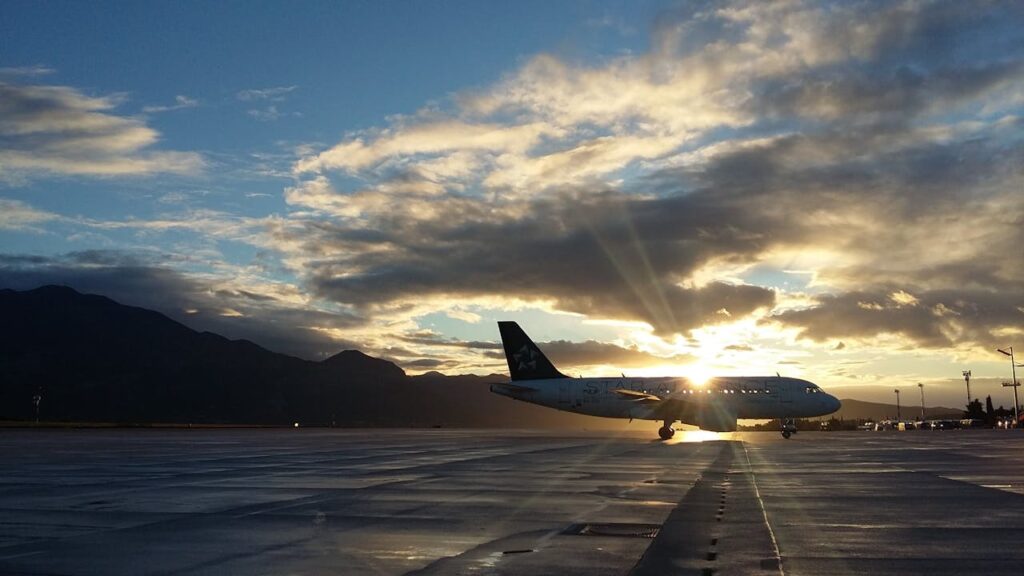
Here’s the thing:
You can’t just fly wherever you want. Not in the US, not in Europe, not anywhere. And the consequences aren’t always a slap on the wrist.
Here’s what trips most beginners up:
- Not registering their drone (you have to, if it’s over 250g in the US)
- Flying in controlled airspace near airports or stadiums
- Not knowing about Temporary Flight Restrictions (TFRs)
- Thinking public parks = public airspace (they don’t always)
- Flying for money without Part 107 certification
What you should do:
- Download the B4UFLY app. It literally tells you if you’re allowed to fly where you are.
- Register your drone at the FAA site. It’s cheap.
- If you’re flying for anything even kinda commercial? You need the Part 107 license.
Table: Common Legal Mistakes vs. Easy Fixes
| Mistake | Quick Fix |
| Flying in a no-fly zone | Use B4UFLY or DJI Fly app to check airspace |
| No drone registration | Register online via FAA (if >250g) |
| Flying too close to people or cars | Stay at least 25–30 ft from people not involved |
| Using your drone footage commercially | Take and pass the Part 107 test |
Know the rules first. It’ll save you a ton of stress, maybe even your drone.
2. Skipping Pre-Flight Checks
You’d never drive a car without checking if there’s gas in the tank. Yet so many pilots take off without checking basic stuff.
This right here is where 90% of “I don’t know why it crashed” stories start.
The pre-flight checklist most beginners ignore:
- Battery level? Not just on the drone—also on your controller and phone/tablet.
- Props? Any nicks, bends, or cracks? Even tiny ones can throw flight stability off.
- GPS? No GPS lock = no return-to-home. Don’t take off without it.
- Camera gimbal? Calibrated? Pointed the right way?
- Wind? Feels okay at ground level, but is it stronger 100 ft up?
You need a checklist. Not in your head. Write it down. Tape it to your case.
Or use one of the apps that let you create digital ones.
Here’s a simple pre-flight flow:
- Power up the controller, then the drone
- Wait for full GPS signal
- Check battery levels across all devices
- Do a quick visual inspection of the props + arms
- Calibrate compass + gimbal if necessary
- Check your return-to-home point
The idea is to never assume anything. If something goes wrong in the air, you’ll want to know you didn’t miss something on the ground.
3. Ignoring Weather—Because It Looks “Fine”
You look outside. Nice day. A little breezy maybe.
But 200 feet up? The wind’s a different story.
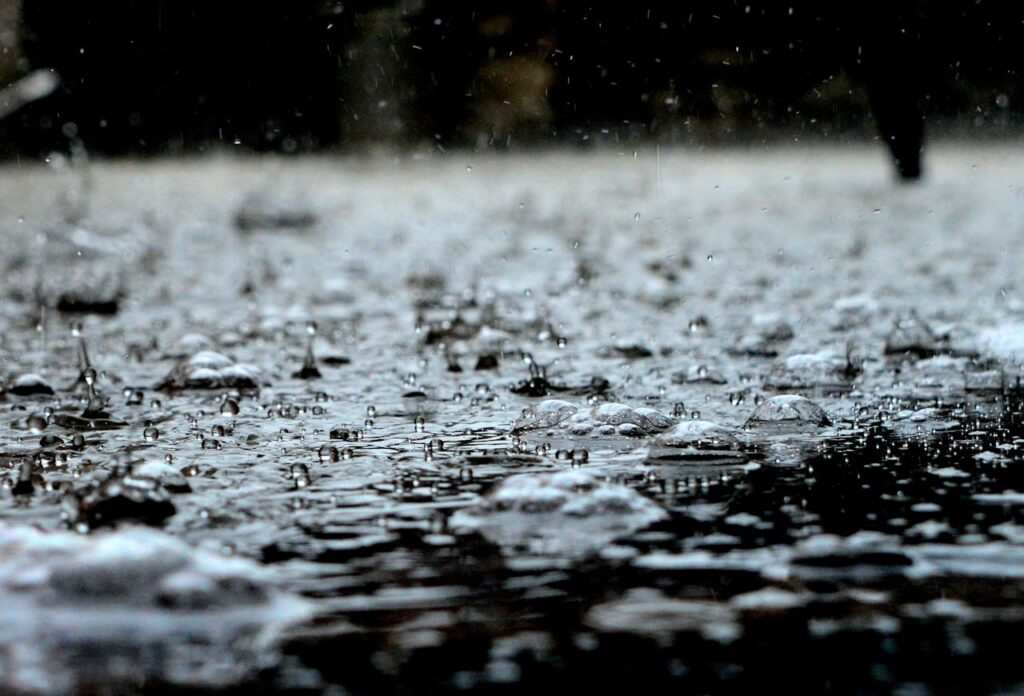
Weather is the silent killer of drones. And unless your drone is a $6,000 industrial model, it probably wasn’t built to fight gusts.
Why weather matters:
- Wind eats up battery life like crazy
- Rain = death for consumer-grade drones (they’re not waterproof)
- Cold weather = slower battery performance, shorter flights
- Humidity can fog up your lens or gimbal
- Gusty wind ruins stable video
You can’t trust ground-level wind. At 10 feet, it’s chill. At 150 feet? Total mess.
Best weather tools for pilots:
- UAV Forecast (gives wind speed, visibility, GPS satellite count, etc.)
- Windy.com (good for gust prediction and wind layer maps)
- AccuWeather (accurate hourly forecasts)
Wind Speed vs. Drone Safety
| Wind Speed (mph) | Safe for Beginners? | Notes |
| 0–10 | Yes | Ideal for practice flights |
| 11–15 | Maybe | Fly lower, avoid sharp turns |
| 16–20 | No | Risk of drift/crash on return |
| 20+ | Definitely not | Park the drone, stay grounded |
So no, it’s not “just a little breezy.” That breeze might flip your drone mid-flight.
4. Battery Basics 101: Don’t Push It to the Limit
This one’s sneaky. Your drone says it has 30 minutes of flight time. So you think, “Cool, I’ve got time.”
You don’t.
That “30 minutes” isn’t real-world. It’s lab-tested, perfect conditions, no wind, minimal maneuvering, zero camera use.
In actual use?
You’re lucky to get 20–23 minutes. If you push it to 10%, you’re begging for an emergency landing. Or worse—watching your drone fall out of the sky with 5% left and no return path.
What usually happens:
- You fly far away from the takeoff spot
- Wind picks up, or you shoot more video than expected
- Battery drops below 20% before you realize it
- You hit Return-to-Home
- Drone struggles, runs out, crash
Here’s the golden rule:
Always plan to land at 25–30% battery. No exceptions.
Also: just carry extras. Batteries aren’t cheap, but replacing your drone ain’t cheap either.
Pro battery tips:
- Never fully drain your batteries
- Don’t charge right after a flight—they need to cool first
- Don’t fly with a swollen or puffy battery (seriously, just don’t)
- Store them at around 50% charge if you’re not using them for a while
Common Battery Mistakes
| Mistake | Why It’s a Problem | What to Do Instead |
| Flying to 0% | Can damage the battery permanently | Land at 25–30% |
| Charging right after flight | Heat can reduce battery life | Wait 15–20 minutes |
| Leaving batteries fully charged | Shortens lifespan over time | Store at 40–60% |
| Ignoring firmware updates | Can cause battery data misreads | Update regularly |
Think of your battery as your fuel tank and your safety line. If you cut it too close, you’re asking for a hard crash—and maybe even a lost drone if you’re flying over water or a forest.
5. Out of Sight, Out of Control
Ask yourself this: Can you still see your drone with your eyes? If not, you’re already flying blind.
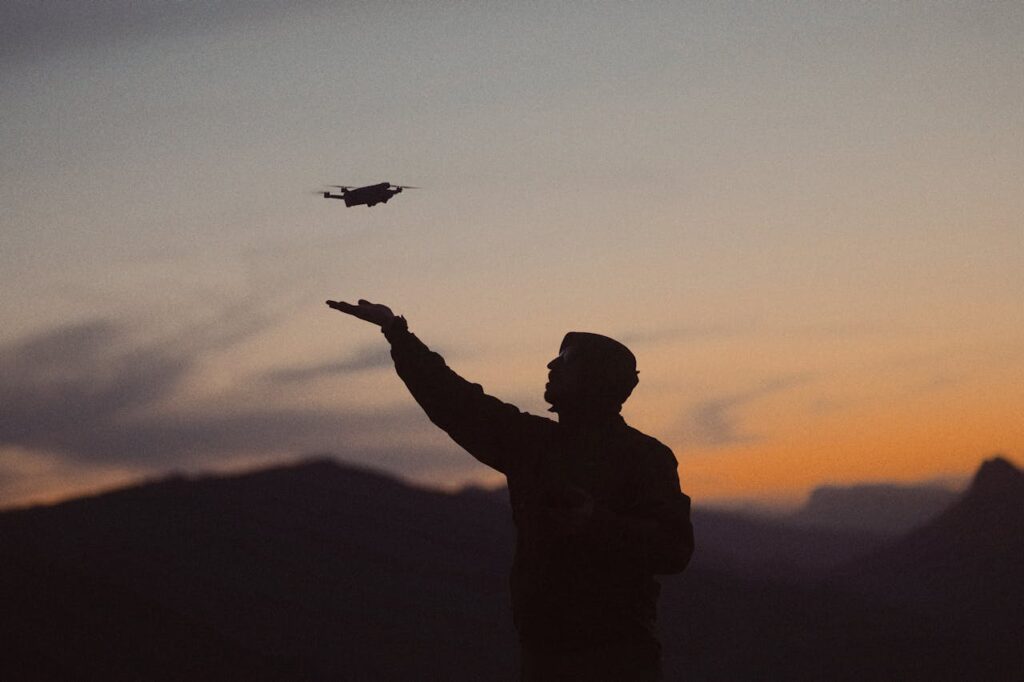
So many people push their drone too far. One second it’s a little dot. Next second it’s gone. You panic.
Hit return-to-home. Wait. Nothing. Or worse—it slams into a tree because you didn’t see the obstacle between it and you.
Visual Line of Sight (VLOS) isn’t just a rule—it’s how you avoid disaster.
Problems with flying beyond line of sight:
- You can’t see what’s in the way (birds, trees, wires)
- Live video feed may lag, freeze, or drop entirely
- Wind conditions can change at higher altitudes or longer ranges
- If GPS signal drops or compass freaks out, you’ve got no backup
What “line of sight” actually means:
- You can see your drone with your eyes, not through the screen
- You’re not relying on FPV feed alone
- You know your orientation (front/back of the drone) at all times
Tips to stay in sight:
- Fly in open areas—fields, beaches, parking lots
- Avoid flying directly into the sun
- Paint or sticker your drone for better visibility
- Use a spotter if you’re filming or focusing on controls
If you can’t see it, you can’t control it. That’s not just a saying—it’s physics.
6. Learn the Boring Stuff First (AKA: Basic Drone Maneuvers)
You’re not trying to be a Hollywood drone operator on day one. You’re trying not to smash $1,000 into a tree.
But so many new pilots jump straight into cinematic shots before they can even hover right.
Here’s the truth: the fancy stuff comes later.
You need muscle memory. You need to fly without thinking.
So start small. Start slow. Do the basics. Over and over.
What counts as “basic drone maneuvers”?
- Takeoff + hover at 5 feet for 30 seconds
- Slow, steady forward flight (no drifting)
- Yaw spin while staying in place
- Figure 8s at eye-level
- Smooth landings (not drops)
- Reverse flight + stop
Practice in wide-open spaces. Don’t chase birds. Don’t fly near power lines. Don’t show off.
Drills for new pilots:
- Hover + Rotate
- Hover at 5 ft
- Yaw left/right without drifting
- Box Maneuver
- Fly in a square pattern: forward, right, back, left
- Circle Object
- Fly a slow circle around a cone, post, or landmark
- Figure 8 Drill
- Forces you to use pitch and yaw at the same time
- Great for muscle memory
Do these for 20–30 minutes per session. Film yourself to see your mistakes.
And repeat. The goal isn’t to look cool. It’s to not crash. Do this enough, and the advanced stuff becomes way easier later.
7. Don’t Let Auto Modes Make You Lazy
Auto modes are cool. They feel like magic at first. Press a button, and the drone does a perfect orbit around you. Set a GPS waypoint, and it flies a flawless path. Feels like cheating, honestly.
But here’s the thing—they work until they don’t.
And when they don’t? You better know how to fly manual, or you’re gonna lose your drone real fast.
What auto modes actually are:
- Tools to assist you—not control everything for you
- GPS-based, which means signal loss = mode failure
- Often laggy or unreliable in tight spaces, indoors, or near metal structures
- Easily confused in poor lighting or weird terrain
Most common automation traps:
- Return-to-Home (RTH): people assume it’ll land perfectly—it won’t if the landing spot is blocked
- Obstacle Avoidance: assumes sensors “see” everything—they don’t
- Active Track: great for slow movements, terrible for fast ones or complicated backgrounds
- Follow Me: can crash into stuff it doesn’t detect
Automation gives a false sense of skill. You think you’re flying like a pro, but really, you’re just letting the software babysit the controls.
Then one day, the wind picks up, or the GPS cuts out, or the drone freaks—and you’ve got 3 seconds to react manually.
The fix?
Fly in manual mode regularly. Learn the actual sticks.
Get comfortable in ATTI mode (no GPS). That’s where you really learn control. The drone will drift, you’ll have to counter it, keep altitude steady, move without GPS lock.
It’s messy. It’s frustrating. And it’s how you become good.
You don’t need to fly manual all the time. But if you never do, you’ll never be ready when it counts.
Quick test: Are you too reliant on automation?
| Situation | If You Panic, You’re Relying on Auto Too Much |
| GPS drops during flight | Can you fly it back yourself? |
| Obstacle Avoidance turns off | Can you avoid objects manually? |
| RTH starts but heads to wrong spot | Can you cancel and land it manually? |
| Tracking feature loses you mid-video | Can you regain control smoothly? |
Auto modes are great. Just don’t get soft. You need to be better than the buttons.
8. Fast = Fun Until It’s Not
You feel it the first time the drone kicks up speed. That rush. The wind noise. The tilt. The adrenaline.
And then? You’re flying full throttle 40 mph and suddenly realize—there’s a pole. Or a bird. Or a fence you didn’t see.
Speed is a skill. Not something you just unlock by pushing the stick harder.
Fast flight eats up battery. It widens turns. It increases drift. And it makes mistakes cost more.
Why speed crashes drones:
- Reaction time shrinks. You don’t see stuff coming until it’s too late.
- Turns become wide and sloppy. That cool turn? Oops, too wide—tree.
- Auto modes struggle. At higher speeds, tracking and avoidance systems can lag.
- Wind becomes deadly. A gust mid-turn can throw you way off course.
Should beginners fly fast? No. Not until:
- You can fly figure 8s slow and tight
- You’ve done at least 10+ full battery flights without incident
- You’re flying in an open, clear area—no trees, wires, people
- You can react to directional changes without stopping to think about it
Speed’s only fun when you’ve earned the control to handle it.
Build up to it like this:
- Master slow maneuvers first
- Increase stick sensitivity gradually in your drone’s settings
- Add speed one axis at a time—first forward, then rotation
- Practice fast flight in altitude hold mode, not GPS
Speed vs. Skill Table
| Skill Level | Max Recommended Speed | Notes |
| First 5 flights | Under 10 mph | Focus on control, not thrill |
| Intermediate | 10–20 mph | Only in open fields |
| Advanced | 20–35+ mph | Requires tight muscle memory + awareness |
There’s a reason the best drone racers train for years. They didn’t just wake up and hit 60mph out the gate.
Slow is smooth. Smooth is fast. Fast without smooth is just a wreck waiting to happen.
9. Stay Sharp: Drone Skills Are a Muscle
You learned to fly. Got decent. Maybe even nailed a few cool shots. So now what?
Here’s what most people do: they stop practicing. Just fly when they need to. Casual flights here and there.
And guess what happens? Skills get sloppy. Fast.
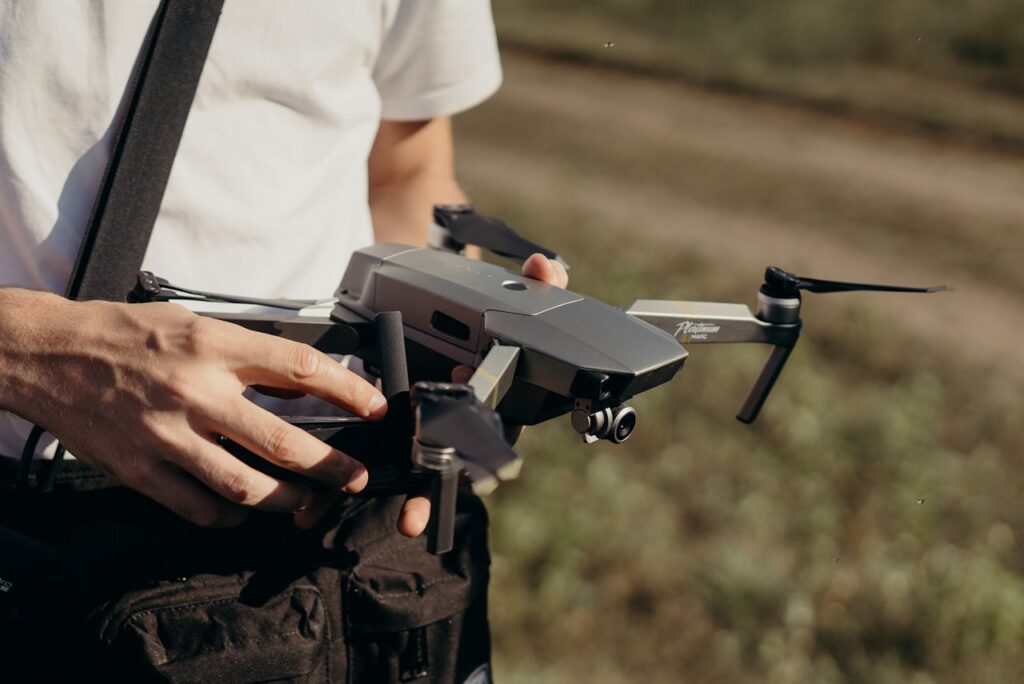
Flying a drone isn’t like riding a bike. You don’t just keep the skill forever.
It’s more like playing guitar. You stop playing for a few months, your timing goes off. Your fingers forget where to go.
Same with drone controls. Your hands forget how sensitive the sticks are.
Your eyes stop noticing horizon drift. You forget to correct for wind when hovering. And the moment something goes wrong—bam. You freeze. Or worse—you crash.
Why constant learning matters:
- Drone tech changes. New firmware, new laws, new features.
- Your confidence fades if you don’t fly for a while.
- Small bad habits creep in when you stop challenging yourself.
- Situational awareness (what’s around your drone) gets rusty.
Ways to keep your drone brain sharp:
- Do 10 minutes of basic drills before every “real” flight
- Watch a tutorial once a week—YouTube is packed with great ones
- Practice flying low and slow in obstacle-rich areas (after you’re confident)
- Join online communities (like r/drones or DJI forums) and share your footage for feedback
- Simulators. Yes, there are good drone flight simulators. Great for rainy days.
tip:
Start a flight log. Not for the FAA. For yourself.
Write down what you flew, what went wrong, what went well.
Treat it like training, not a hobby.
Also? Keep up with FAA changes. Rules change.
What was fine last year might be a big no-no this year. Especially with things like night flying, waivers, and privacy rules.
Don’t just “fly when you have time.” Make time to fly. Even just 15 minutes in a backyard.
That’s how you go from beginner to solid pilot.
Frequently Asked Questions About Basic Drone Maneuvers
How long does it take to learn basic drone maneuvers?
Usually, about 5–10 hours of real flight time. You’ll feel more confident by your third or fourth session if you’re practicing deliberately.
Do I need to learn manual flying if my drone has GPS and auto-stabilization?
Yes. GPS and stabilization can fail. Knowing how to fly manually can save your drone.
Can I practice indoors?
Not recommended for full-size drones. But for mini drones (like TinyWhoop class), indoors can be a good place to learn stick control in a safe environment.
What’s the best maneuver to start with?
Hovering and yaw control. Just getting your drone to stay still and rotate without drifting is huge.
How do I know when I’m ready for faster or more advanced moves?
When you can complete slow box patterns, figure 8s, and controlled landings consistently—without overcorrecting or losing orientation.
Do I need a license to practice basic drone maneuvers?
If you’re flying for fun in the U.S., you need to register the drone (if it’s over 250g) and pass the TRUST safety test. For commercial work, you need Part 107.
Is it okay to rely on auto takeoff and landing?
It’s fine to use them, but you should learn to take off and land manually as backup. Auto modes don’t always handle uneven surfaces well.
What’s the biggest mistake new pilots make during basic drone maneuvers?
Not practicing slow control. Everyone wants to go fast. But control comes from learning how to move slow, smooth, and deliberate.

